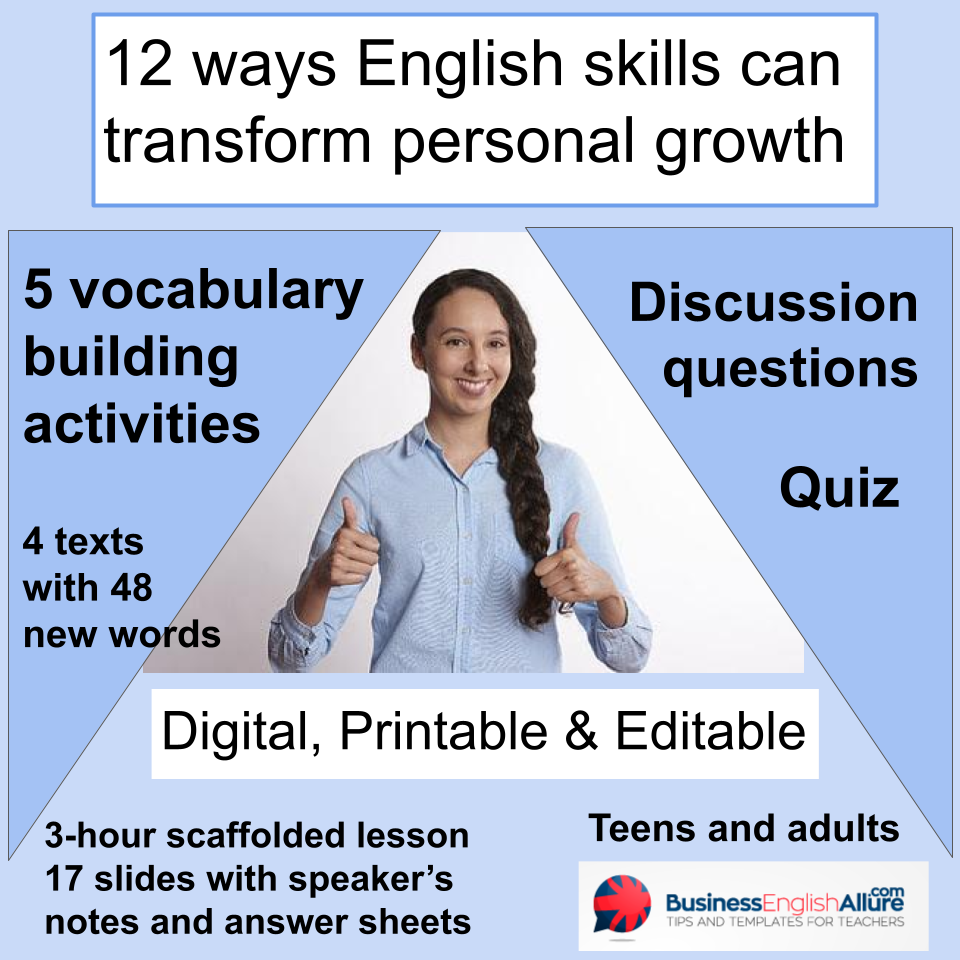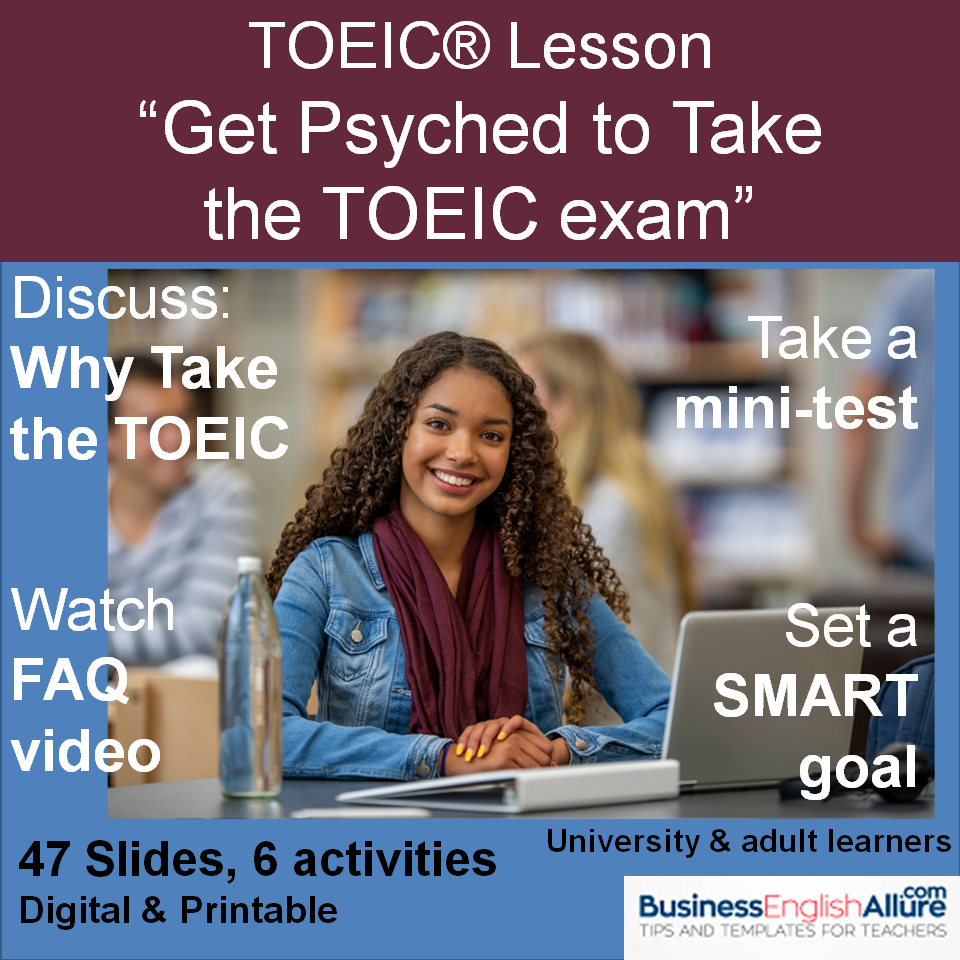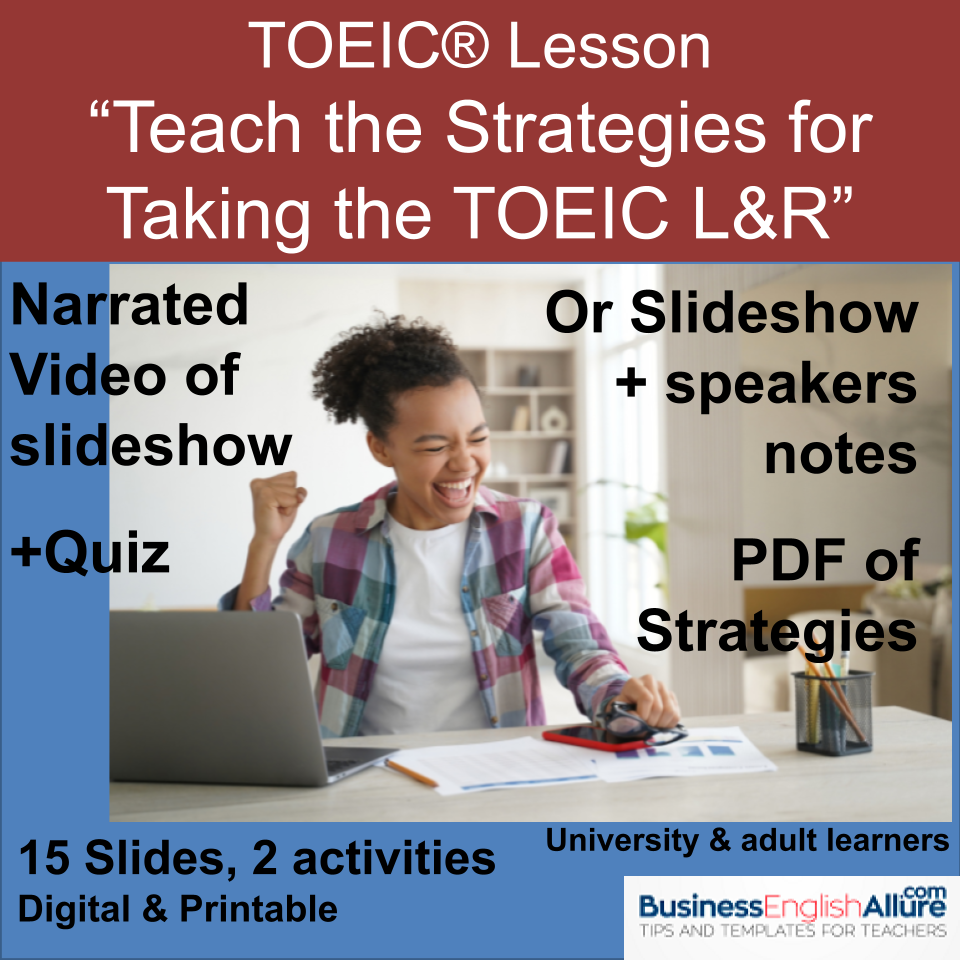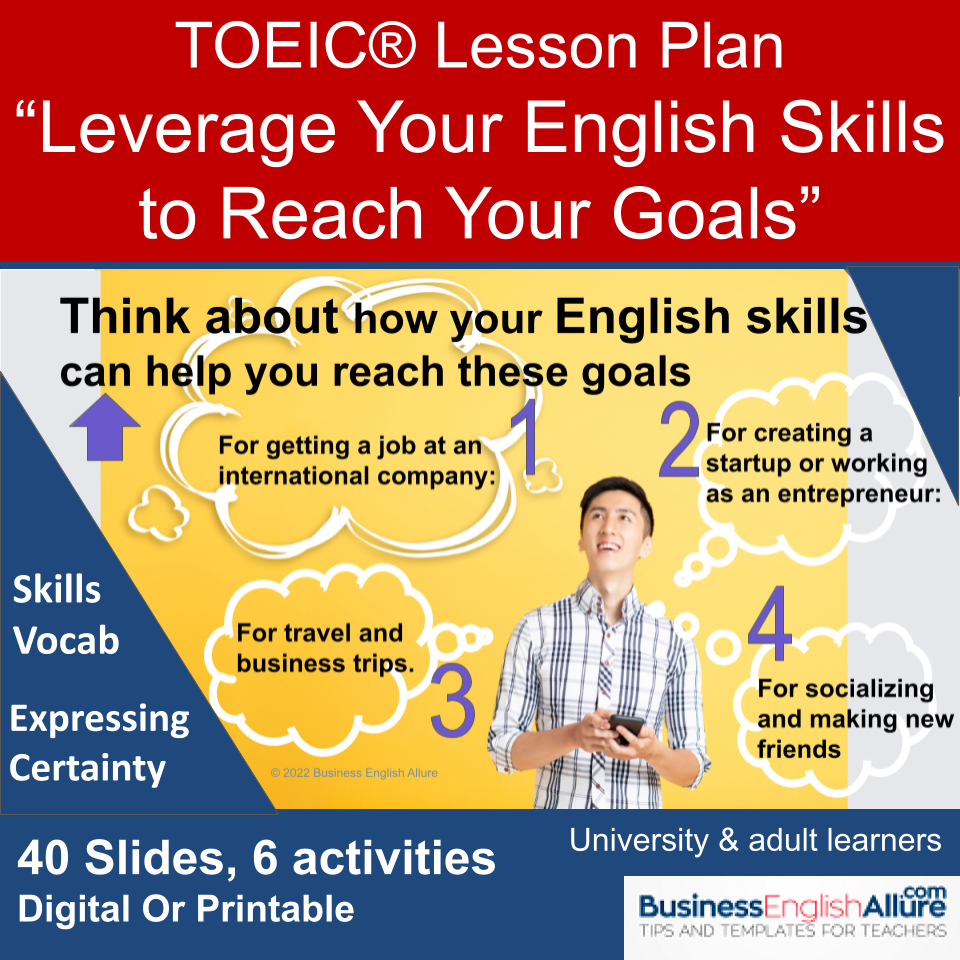TOEIC Lesson Plan: Leverage English Skills to Achieve Goals

Leverage gives us more power. It was the ancient Greek mathematician and philosopher Archimedes who calculated just how much it helps. Why not encourage your business English students to leverage their English skills to reach their goals? Celebrities, professional athletes, and rock stars have learned English to reach the top. Where would Arnold Schwarzenegger be today without his English skills?
I’m sure you know someone personally who reached their goals with English. An ESL student of mine shared the story of what led to her success. She decided in college to differentiate herself from a pack of brilliant engineering students by leveraging her English skills. “Everyone was good in math,” she said exasperated “so I decided to be good in English.” She got the coveted job in telecommunications research she had targeted as her goal. I’ve retold this story many times to try to motivate my trainees to devote more time to studying English and differentiate themselves as she did by leveraging English.
I decided to write a lesson plan to get momentum going. This lesson plan will motivate your students as they discover which English skills will be needed to reach four life goals: getting a job, creating a start-up, traveling the world, or socializing and making more friends.
By the end of this lesson, your students will have the expressions needed to talk about the various English skills needed to reach a life goal and will have the grammar and expressions needed to give their opinions on the likelihood of needing certain skills. I suggest finishing up with a team project where students brainstorm a funny fictional character, his/her goal, and the tasks in English they will or might need to perform to reach that goal. Examples of fictional characters could be a DJ, an Instagram or TicToc influencer, a soccer player, or a hip-hop artist.
Download a PDF of this article here
Introduce your adult ESL lesson with a quote
Use this famous quote from Archimedes to explain the notion of leverage. The Greek philosopher, Archimedes, said, “Give me a lever long enough and a fulcrum on which to place it, and I shall move the world.”

Adults expect real-life examples to back up a point
These three articles highlight famous people who’ve leveraged English to succeed. From the three articles, pick out images of selected celebrities based on the interests and life goals of your students. Pick out two or three photos of athletes, or film stars that will motivate your students to work harder in English. Project the photos and start a discussion. “Where’s she from?”, “How did he become famous?” “What’s his background?”. Maybe students will have more details to add or can come up with other famous people more relevant to them and tell their stories.
TIP: to download a photo from a website to a Windows computer, right-click on the photo and select “save the image as…”.

1) 31 Famous Celebrities who had to learn English. Each of the 31 celebrities identified in this article come with a short text and sometimes a little history as well. Encourage your students to do more research on a favorite celebrity to share with the class.
https://www.ranker.com/list/celebrities-who-learned-english-as-a-second-language/celebrity-lists
2) Korean idols who have taken the TOEIC. In South Korea, the TOEIC (Test of English for International Communications) is widely known. This article picks out three Korean idols with really high scores of over 900.
3) Top 10 Polyglot Athletes. This article lists lots of football (soccer) players and other international athletes who’ve worked hard on their English skills to succeed in their sport.
https://beelinguapp.com/blog/top-ten-polyglot-athletes
Watch a video with an embedded quiz to introduce vocabulary
Write these four life goals on the board and brainstorm the English skills that might be needed to achieve the goal.
- Get a job with an international company
- Create a start-up
- Travel the world
- Socialize to make new friends
Now watch this 4min video with your students. Many more tasks in English that are needed to reach the four different life goals will be covered. Lots of vocabulary here. There is a quiz where students will shout out vocabulary or a verb, then are shown the correct answer. Encourage them to drop their inhibitions and shout out the answer.
Use the time stamps of the four chapters, if students need to refer back to a certain skill. This video could be used as a model for the slide show students will create and present at the end of the lesson. Let them watch the video as often as they need. Here’s the YouTube video link you can share it with them via email so they can watch it on their phones Or create a QR code
.
Give business English students the grammar they will need to succeed
Students will need a little grammar about degrees of certainty in order to participate later in the speaking activity (slide show creation and presentation) where they will brainstorm a fictional character and his/her goal. ie: a rap artist?, a videographer?, an Instagram influencer?, you name it. Participate in the brainstorming session with ideas phrased just like in the video, “To get a job, she will need to speak well to give a presentation.”
Using the same sentence construction over and over can be monotonous. Change it up with these expressions.

Find this one-page table as a PDF file here.
Go over the chart in detail with students so they can easily see the logic behind it.
Point out the four degrees of certainty first: A. I’m very sure. B. I’m sure. C. I’m almost sure. D. I’m not sure. In the video we watched earlier, all the sentence examples were “will” = I’m sure. During the brainstorming session later, discussion will center around whether an English skill will be needed or not to achieve a goal, and students will be looking for more subtle ways of expressing their opinions.
For simplicity, “to do it” refers to any of the skills (give a presentation, describe a friend in detail…)
The far left column shows the sentence forms used to express degrees of certainty:
We can use a modal verb such as “will” and then add an adverb (definitely, probably), or use the model verb “might”.
We can use adjectives with the verb “to be”. She is likely to need to do it.
We can use noun phrases “There is a good chance” etc.
Or we can use other verbs: I think, I doubt, I expect.
Explain the difference in sentence construction: The color-coded highlights show when we simply add the bare infinitive after a modal verb (yellow); when we must add “to + infinitive” (blue); and when we need to add a complete phrase green. The conjunction (that) in parenthesis indicates it is optional. I suggest students use thie conjunction “that” because it is much less ambiguous. A more formal construction can help us express subtiles clearly.
NB. Link to article on BBC where I got the expressions. https://learnenglish.britishcouncil.org/grammar/b1-b2-grammar/the-future-degrees-of-certainty
OK let’s practice!
Give ESL students plenty of time to practice in class.
Nothing better, in my opinion, to practice fluency than with flashcards. Give students plenty of time to practice individually or in teams, then use the stopwatch on your phone to “time” students going through the cards. Time yourself to give more advanced students a target to shoot for.
The flashcard game uses all 30 expressions from the table to answer one question “Will she need to do it?” That’s 30 answer prompts for only one question. Word order is so important. This game is designed using the same pronoun “she” and is perfect for B1 levels. Download B1 flashcards here.
Sounds too simple? Then use a second set of flashcards for upper-level ESL students where the pronoun in the question changes. “Will I need to do it?”, “Will we…” etc. Download B2 flashcards here.
The 30 flashcards could be categorized in columns according to the degree of certainty: I’m really sure, I’m sure, I’m almost sure, I’m not sure. The four cards to use as column headers are included at the end of both flashcard files.
Give students a project to show off their skills
This collaboration project is meant to be fun. Students will brainstorm a fictional character with the goal of becoming a Soccer Star or HipHop singer, for example. This could be an individual project as well. Some students may prefer to use their own profile and goal.

Finish up your Business English class on a positive note with a song
Song “High Hopes” by Panic at the Disco. There are some really good expressions such as “make a killing”, “one more run (round?, “shooting for the stars”, “didn’t have a dime”, ) and “be one in a million”. Why not find the lyrics online and make a gap-filling exercise?

Leave a comment and signup for more useful stuff
I hope you will use this post in your business English classes as well as your TOEIC preparation classes. Leave a comment if you liked this post. Signup for the newsletter if you want to receive more posts.
Need another TOEIC lesson plan?
https://www.businessenglishallure.com/toeic-lesson-plan-discussing-goals-and-success/
https://www.businessenglishallure.com/what-is-the-toeic-test-all-your-questions-answered/

I’ve got a store on TeachersPayTeachers.com
No time to prepare? Buy this ready-made TOEIC lesson plan on “Leverage English Skills to Reach Goals” for just $5. Pay with PayPal. Digital & printable versions.






 Our new vocabulary lesson focuses on personal development and growth, two topics that resonate with learners of all ages.
Our new vocabulary lesson focuses on personal development and growth, two topics that resonate with learners of all ages.  By the end of the lesson, your students will be motivated to reach new heights.
By the end of the lesson, your students will be motivated to reach new heights. Check out the 3-hour lesson on TeachersPayTeachers $5
Check out the 3-hour lesson on TeachersPayTeachers $5 






2 Responses
[…] https://www.businessenglishallure.com/toeic-lesson-plan-leverage-english-skills-to-achieve-goals/ […]
[…] https://www.businessenglishallure.com/toeic-lesson-plan-leverage-english-skills-to-achieve-goals/ […]